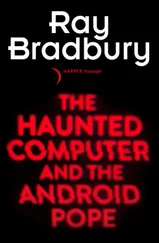By the summer of 1981 we were also getting a lot of pressure from our Japanese colleague to move to a more convenient location. In Japan, a successful company wouldn’t be located in a small town. For prestige value as well as operational convenience, a successful company in a small town would move to a major city. And if a Japanese company were serious about continuing its success, it would move to Tokyo. Of the major cities open to us, we were willing to consider only Seattle or the San Francisco Bay Area, both of which had better facilities for our Japanese friend. We chose the Bay Area because Gary and I hadn’t forgotten the euphoria of our arrival there for the 1980 Computer Faire. So we packed up the entire enterprise and moved it south to San Rafael in August 1981.
There were five of us at the time we left Eugene—Gary, Cathy, Brian Ehler (who was a production worker and who is now director of Sales Administration), Chris Jochumson (an independent programmer and friend), and I. We set up operation in a house. We didn’t know any better—we had always operated out of a house—and at first, our business consisted of a few phone calls, daily trips to the post office, and use of one Apple II computer (having long since abandoned the TRS-80). In the meantime, we were fairly oblivious to things like zoning laws and never suspected that our neighbors would report us, which they did the first week we moved in, when the UPS trucks started driving into our cul-de-sac to pick up our shipments.
The Planning Commission came by and we had a chat and decided to move the operation once again. We found an old liquor warehouse, also in San Rafael. We expanded throughout the building one chunk at a time, and after several months, we eventually filled the building and even the building next door. By 1983 it was time to move again, because we now had forty-five employees and no parking facilities. We were still violating most of the zoning ordinances, but as there were no neighbors we got away with it. Still, our accommodations were cramped and crowded, and the roof leaked like a sieve. In mid-1983 we moved into the building that we still occupy today. It still isn’t spacious enough, but it is much nicer to work in. And it’s in an industrial park in San Rafael, so we’re legal now.
In the spring of 1982, we were approached by venture capitalists, as were several other formerly-small software publishers who had grown into multimillion-dollar businesses. Venture capitalists—sometimes known as “vulture capitalists”—like to find million-dollar businesses, infuse them with money and guidance and even stick a few of their own people on the board of directors, and then take the companies “public” a few years later.
With the success of Microsoft, Micropro, Personal Software, and Digital Research, the big-money people were beginning to look a lot more seriously at the upside potential of this peculiar industry that had mutated from a bunch of hobbyists. We had one bad experience ourselves, with a venture firm that will remain nameless but that made us a very attractive offer of working capital in exchange for a healthy piece of the action. We almost agreed to do business with the firm until our lawyer pointed out that one term in their proposed contract gave the firm the power to fire us all and take over Brøderbund if we failed to show a profit two quarters in a row. We had no intention of ever failing to show a profit for even one month, but the idea of even taking the risk of losing our company was totally unacceptable. We eventually made a deal with a venture firm called Burr, Egan, and Deleage, and we’ve been happy with them.
By the time we moved to our present quarters, Brøderbund had already developed its own group of programmers— either in-house programmers or independent programmers who had a very close association with us. This development began after I had given up programming, when we realized that we had to find other product sources. Our most successful products, during the explosive stages of our growth, were the original programs that were submitted to us, like the Star Craft games. Then we began to work with original submissions that needed further development but nonetheless looked promising. Gradually, after a few years, we worked our way to a system that we found comfortable as well as profitable. We still use that system today, whereby we treat programs in development in a manner very similar to the way book publishers treat manuscripts in development. Later on in the book, when we take a look at the way different software publishers and developers create new products, we’ll focus on the process of product development. For the time being, however. I think we’ve spent enough time discussing Brøderbund, which is hardly the one and only scene of action in the software world. It’s time to enlarge the frame of reference to include other developments and other people in the burgeoning microcomputer software industry. Now that you know who I am and where I came from, its time to meet some other software people.
Without programmers there would be no microcomputer software industry today, and personal computers would have remained confined to the small fraternity of hobbyists knowledgeable enough to create their own programs. Without programmers like the ones discussed in this chapter, a softwareusing community never would have existed to make folk heroes out of these unlikely cultural explorers.
Some of them live like hermits, and others are as gregarious as rock stars. All of them love to tinker with abstractions. Some are intellectuals, many are artisans, and a few are true geniuses. I know dozens of these characters, but I’ve picked three to discuss here: Paul Lutus was chosen because of his outright eccentricity and the size of the fortune he made for himself; Bill Budge is included because of the artistry of his work and because he is a prime example of the software creator as pop star; John Draper’s story shows up here because he was probably the first legendary software person, given his earlier notoriety as a different kind of technological folk hero.
Paul Lutus is either the most entrepreneurial of the software eccentrics or the most eccentric of the software entrepreneurs. Certainly he has one of the most unusual backgrounds of anyone in the software industry. In the late 1960s, he was a vagabond who spent several years actually living under the bushes in San Francisco’s Golden Gate Park and, later, on various Lower East Side rooftops in New York City. He experimented with psychedelic drugs, was a street musician, and became a minor celebrity because of his skill at blowing soap bubbles. By the mid-1970s he was back in California, pursuing a relatively mainstream lifestyle and working for NASA. Then he moved to Oregon and lived alone in a tiny cabin on Eight Dollar Mountain. It was there that he taught himself how to program. In the early 1980s, he was still a hermit, albeit in a much more sumptuous retreat, and he had grown accustomed to receiving royalties of two or three million dollars a year from the sales of his programs.
Paul is an independent fellow, but he goes far beyond the normal bounds of independence one comes to expect from programmers, both in what he demands and what he succeeds in getting. He does his own carpentry, his own programming, and his own contract negotiations. He loves music and plays a number of musical instruments. He loves to fly and even pilots his own plane. He even grows his own food, and his brain still seems to generate ideas far faster than he is able to articulate them. To this day he wears clothes that would best be described as “comfortable.” His once-tangled head of hair is thinning, but his beard is full and bright red, and he still talks as fast and as passionately as humanly possible when he really gets wound up.
Читать дальше










